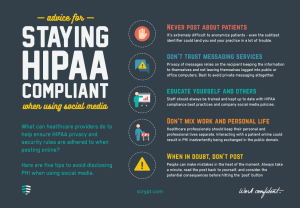Compliance with EHR software is crucial to ensure patient privacy, data security, and legal adherence. Prioritizing compliance with HIPPA regulations not only ensures the trust of patients but also mitigates the risk of reputational damage and legal consequences. Here’s how can you ensure compliance with EHR software:
Familiarize Yourself with Relevant Regulations for Compliance with EHR Software
First things first, one must know the rules to follow the rules. Hence, get familiar with the regulations so you may:
- Understand and adhere to the national and regional regulations.
- Stay updated with any changes or amendments to these regulations to ensure ongoing compliance.
Implement Strong Access Controls
Because patient medical information is protected by HIPPA regulations, it needs to be treated with sensitivity and seriousness. Limit who can access this information through the following steps:
- Establish role-based access controls (RBAC) to limit access to patient data based on an individual’s job responsibilities and need-to-know basis.
- Implement two-factor authentication (2FA) to enhance security and prevent unauthorized access to EHR systems.
- Regularly review and update user access privileges to reflect changes in staff roles or responsibilities.
Train Staff on Data Privacy and Security
The staff is as good as its leader. Ensure the utmost compliance with EHR software by bringing your staff on board through the following steps:
- Conduct comprehensive training sessions to educate staff members on the importance of data privacy, security best practices, and compliance requirements.
- Ensure that employees understand their responsibilities in handling patient data and the consequences of non-compliance.
- Regularly refresh training programs to keep staff informed about evolving privacy and security concerns.
Encrypt Data in Transit and at Rest for Compliance with EHR Software
Investing in great IT personnel is key. As doctors you can delegate the task of ensuring data security so the IT crew can:
- Encrypt all patient data when it is being transmitted over networks to prevent interception or unauthorized access.
- Utilize strong encryption algorithms and security protocols to protect data integrity during transmission.
- Implement encryption measures for data at rest to safeguard patient records stored within EHR systems or databases.
Conduct Regular Risk Assessments
Complacency leads to slip-ups therefore it is imperative to keep updating security protocols. Tech is constantly developing and new ways of hacking the system are always on the rise. Ensure security compliance with EHR software by:
- Performing regular risk assessments to identify potential vulnerabilities and threats to patient data security.
- Evaluating the effectiveness of existing security controls and making necessary adjustments to address identified risks.
- Documenting risk assessment findings and implementing risk mitigation strategies.
Implement Robust Data Backup and Recovery
Backups are a must for patient information recovery. Anything can happen, so it’s best to be prepared for the worst by following these steps:
- Establish regular data backup procedures to ensure the availability and integrity of patient records in case of system failures, natural disasters, or cyber-attacks.
- Store backups in secure, offsite locations and periodically test the restoration process to verify data recoverability.
- Maintain an updated disaster recovery plan outlining steps to be taken in the event of a data loss or breach.
Monitor and Audit System Activity for Compliance with EHR Software
Finally, auditing is essential for compliance. Ensure a proper audit by:
- Implementing system logging and monitoring tools to track user activity within the EHR system.
- Regularly reviewing audit logs to detect and investigate any suspicious or unauthorized actions.
- Conducting internal and external audits to assess compliance with privacy and security standards and identify areas for improvement.









